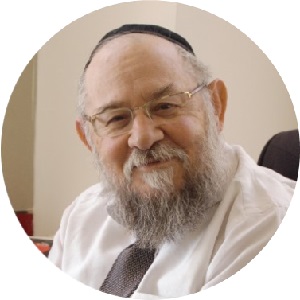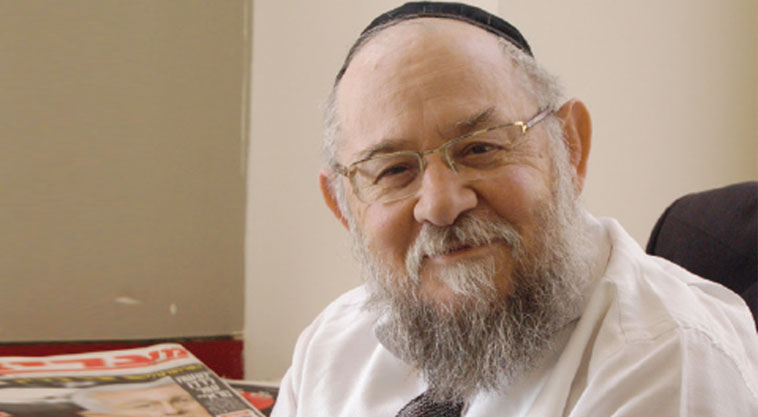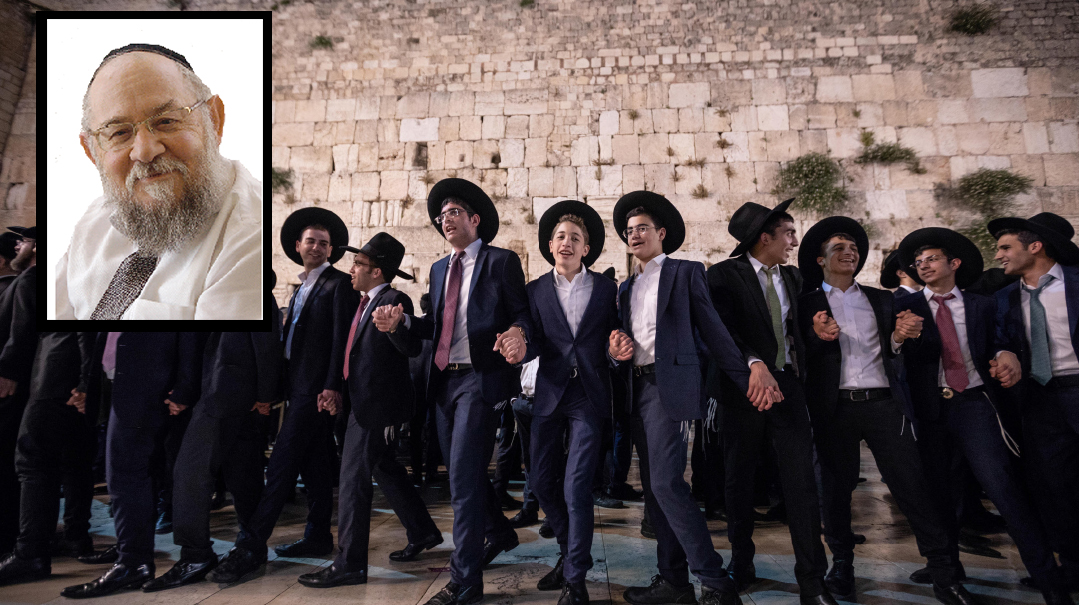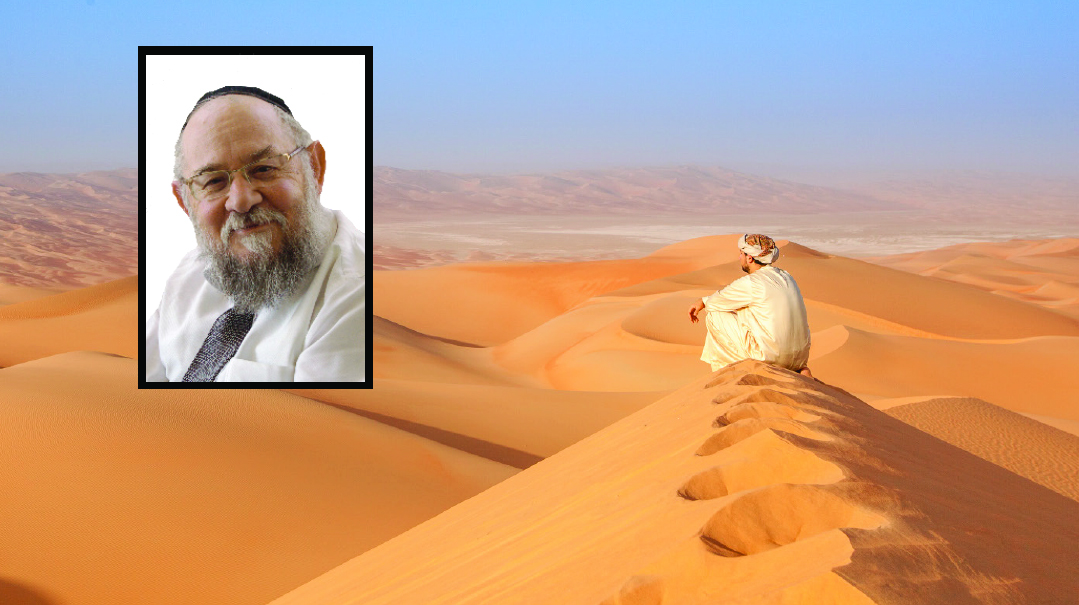What’s Wrong with This Picture?


W ith all the fuss about the Reform movement insisting on egalitarian prayer at the Kosel the extension of the Wall designated for that is nearly always empty. Where for example were all those dedicated sincere worshipers on 17 Tammuz the day Jews mourn the beginning of Jerusalem’s destruction? Not there…
A picture as they say is worth a thousand words. One young Israeli posted an eloquent picture on a social media forum. It shows him wrapped in tallis and tefillin and in the background the so-called “Ezrat Yisrael” — empty and desolate. The “Ezrat Yisrael ” for those who haven’t heard is the new name of the area at the southern end of the Kosel which was officially designated for non-Orthodox prayer service. Nearly half a century after the Kosel was restored to Jewish control these Jews have supposedly developed a desperate craving to conduct their rites there and in an effort to satisfy their desire Israel’s bighearted government earmarked the Robinson’s Arch section of the Wall for all those wishing to participate in egalitarian rituals.
It seems however that the would-be worshippers have decided not to desecrate the site after all for no one has been using it. The young man in the picture which was snapped last week on the Seventeenth of Tammuz points out that “no day could be more fitting for prayer at the Kosel for mourning the destruction of our Temple which began on this day. And yes the Kosel Plaza is teeming with mispallelim. But over here by our Reform brethren — nothing. Nobody is here not even for solitary prayer. And this empty plaza is an apt symbol of the religion it was designated for a religion empty of meaning.”
A sharp-penned Israeli journalist who defines herself as a dedicated atheist had this to say about the Reform segment of Jewry: “I am totally irreligious; I transgress all the mitzvos of Judaism. Tell me you Reform Jews what mitzvos you keep so I can transgress them.”
Yet the silence and emptiness at Robinson’s Arch has me worried. Amid all the hullabaloo about the Kosel one thing is clear: Those who have been clamoring for a voice at the Wall care about the Kosel about as much as they did thirty or forty or a hundred years ago when all references to Eretz Yisrael and the Beis Hamikdash were excised from their liturgy. What they really want is official recognition as a legitimate stream of Judaism — yet such recognition would mean disaster for the Jewish character of the State of Israel. Is there a chance of that happening? The danger is certainly real as long as our secular government is less interested in the truth about the Reform movement than in the deep pockets of some of its members who presume to speak for all of American Jewry as if they were its representatives.
And therefore I join Rabbi Pesach Lerner in his cry of “Mi la’Hashem eilai!” Rabbi Lerner has sounded a wake-up call to Torah-true Jews of every stripe to come out vigorously against recognition of this heretical sect. The matter has once again come before Israel’s Supreme Court and what we can do in terms of hishtadlus is to exert pressure on the government showing them clearly that Orthodoxy is the present and future of worldwide Jewry while the Reform and Conservative movements are in fact on the decline.
Delegations of rabbis from every stream of Orthodoxy should request meetings with government figures and a publicity campaign should be launched to call the bluff of those who claim to represent the majority stance of American Jews. Israel’s government must be made aware that the threat of a rift between them and world Jewry is delusory. The government should be inundated with phone calls and e-mails from everywhere in the Jewish world. As many groups as possible should come to Israel and show our policy makers that Torah-true Jews are the fastest-growing Jewish population a very real presence in the Jewish state and abroad; and it is they (us) who truly care about the Jewish nature of the State of Israel. This is vital because at this time it appears as if aside from a few chareidi politicians no one among the Torah-faithful really cares. Let us show them that we care very much indeed and let us show that public opinion properly expressed can prevent recognition of this falsification of our holy Torah.
SAVING SHABBOS
I recently spoke with a friend who suggested “How about writing something good about this wonderful people of ours?”
“I’d be glad to” I replied. “What do you have in mind?”
“Well you know that our political parties in the Knesset have been fighting a tough battle lately against chillul Shabbos what with stores in Tel Aviv practically being forced to open on Shabbos Israel Railways running its trains and voices all over calling for bus service on Shabbos. The situation doesn’t look good; it appears that a new era is on the horizon when public observance of Shabbos is going to be a thing of the past. How long can the status quo be maintained with all the court cases and threats to leave the government coalition? The reality is that too many people aren’t keeping Shabbos and want to see the restrictions swept away.”
I listened as I wondered what good thing about our wonderful people this was leading up to. And then my friend said “But I see things from a different angle. I see a ripple of change. It may be only a small number of people now but I think it’s spreading. And we should be paying attention to it because it may end up saving Shabbos. You know what I’m talking about. You’ve even written about it yourself — how a growing number of Israelis in the arts are dabbling in Shabbos observance. Okay they’re not becoming baalei teshuvah overnight but on Shabbos they’re turning off all the noise. They’re not using their phones they’re not turning on the radio or the TV. They may not be eating cholent and singing zemiros but they are making Shabbos a day of quiet reflection. If it isn’t Shabbos k’halachah it’s definitely a start and a move in the right direction.”
“Okay. But it hasn’t really made a difference to the general population.”
“True. It hasn’t made any big waves. As I said it’s a ripple. But history shows that in every nation the artists are the ones heralding in every spiritual revolution. They’re the first to feel it coming and they express it in their work. Here in Israel too the people at the vanguard of the teshuvah movement were performing artists.”
“Like Rabbi Uri Zohar for example.”
“Even before him there were people on the performing arts scene who left their secular lives behind. They weren’t all as well known as Uri Zohar was but their voices were heard and they showed that something was changing. And that’s why I wanted to call your attention to an amazing article that Yedidya Meir wrote last week. He said that many singers from the top tier of Israel’s celebrities — he counted thirty-seven of them — have taken on a resolution not to perform on Shabbos. He tells about a nonreligious singer named Omer Adam who was willing to give up a 1 500 000-shekel contract rather than perform on Shabbos. Yedidya Meir named other singers too who were offered huge sums to perform on Shabbos and turned the offers down. To me that’s incredible mesirus nefesh.”
“That reminds me ” I said. “I read recently that a number of amusement parks in the Galil have been closing on Shabbos.”
“You see? All this means something. It means that even if Shabbos is getting hurt in the political sphere it’s not going to disappear because there’s a grassroots movement among the people that’s going to save it.” (Originally featured in Mishpacha Issue 669)
Oops! We could not locate your form.




